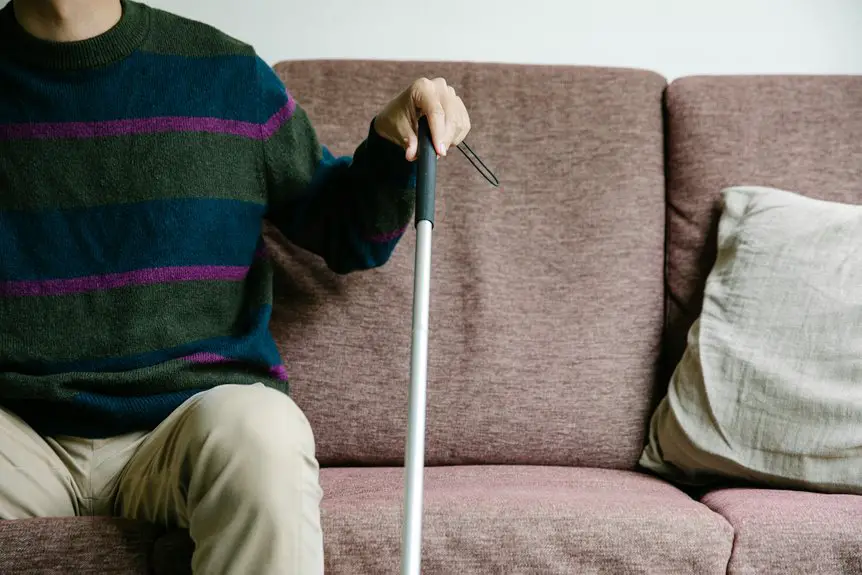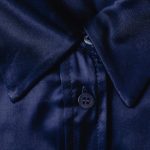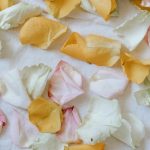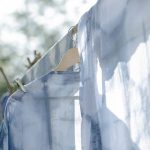Kevlar fabric prices vary based on grade, weight, and weave type. You’ll typically pay $20-$40 per yard for basic Kevlar, $40-$80 for industrial-strength, and $80+ for premium, high-performance fabric. Heavier, tightly woven Kevlar costs more but offers better protection. Buying in bulk can lower your cost, and shopping online lets you compare prices easily. To choose the right fabric that balances cost and durability for your project, keep exploring key factors affecting price and quality.
Table of Contents
Key Takeaways
- Kevlar fabric prices vary from $20 to over $80 per yard depending on grade, weave type, and weight category.
- Lightweight Kevlar (3-6 oz/yd²) suits garments, costing less than heavyweight (11+ oz/yd²) used in industrial applications.
- Kevlar 29, 49, and 129 grades differ in flexibility and strength, influencing price and suitability for projects.
- Buying in bulk and comparing multiple online suppliers can significantly reduce the price per yard.
- Evaluating cost against performance needs is crucial to select the right Kevlar fabric for protective or industrial uses.
Understanding Kevlar Fabric and Its Uses
Although you mightn’t see it every day, Kevlar fabric plays a crucial role in many industries due to its exceptional strength and durability.
When you handle Kevlar, you’re working with a material that’s five times stronger than steel by weight, yet lightweight and flexible. You’ll find it in protective gear like bulletproof vests, motorcycle clothing, and helmets, helping keep people safe.
Beyond safety, Kevlar also strengthens tires, ropes, and aerospace components, showcasing its versatility.
If you’re considering using Kevlar fabric, understanding its unique properties—such as heat resistance and cut resistance—can help you select the right type for your needs.
This knowledge guarantees you get the maximum benefit from this remarkable material in your projects or products.
Factors Affecting Kevlar Fabric Price Per Yard
When you shop for Kevlar fabric, you’ll notice prices vary widely depending on several key factors.
The weave type greatly affects cost—tighter weaves or specialized patterns usually cost more because they offer better strength and durability. Fabric weight also plays a role; heavier Kevlar fabrics contain more material per yard, increasing the price.
Additionally, the fabric’s width can influence cost, as wider bolts often provide better value per yard. Your purchase quantity matters too—buying in bulk typically lowers the price per yard.
Finally, market demand and supplier location can cause price fluctuations, especially if shipping or import fees apply.
Comparing Kevlar Fabric Grades and Their Costs
Understanding the different grades of Kevlar fabric can help you choose the right material for your project while managing costs effectively.
Kevlar comes in various grades, each designed for specific strength, flexibility, and durability requirements. When comparing them, focus on the following:
- Kevlar 29: Commonly used in body armor, offering high tensile strength but less flexibility.
- Kevlar 49: Preferred in aerospace and automotive industries for its stiffness and impact resistance.
- Kevlar 129: Combines strength with improved flexibility, ideal for ballistic helmets and gloves.
Each grade’s unique properties influence its price, so picking the right one depends on your project’s needs.
Typical Price Ranges for Kevlar Fabric Per Yard
You’ll find Kevlar fabric prices usually fall into standard tiers based on quality and weave.
Several factors like thickness, weave type, and brand influence the cost you’ll pay per yard.
Let’s compare typical price ranges across different Kevlar fabric types to help you make an informed choice.
Standard Pricing Tiers
Kevlar fabric prices per yard typically fall into three main tiers, helping you gauge cost based on quality and specifications.
Understanding these tiers makes it easier to choose the right fabric without overspending.
- Budget Tier ($20-$40 per yard): Basic Kevlar, often lighter weight and less dense, suitable for simple protective gear or hobby projects.
- Mid-Range Tier ($40-$80 per yard): Standard Kevlar with balanced strength and durability, ideal for most industrial and tactical applications.
- Premium Tier ($80+ per yard): High-performance Kevlar variants, often woven for specialized uses like ballistic protection or aerospace components.
Knowing these tiers helps you match your needs with the most cost-effective option, ensuring you get the right Kevlar fabric without compromise.
Factors Influencing Cost
Although prices vary widely, several key factors influence the cost of Kevlar fabric per yard.
First, the fabric’s weave density plays a big role—tighter weaves typically cost more because they offer better strength and durability.
The weight of the fabric also matters; heavier Kevlar tends to be pricier due to increased material usage.
You’ll find that color options affect price, too, with specialty or dyed versions often carrying a premium.
Additionally, the manufacturer’s reputation and certification standards can impact cost, especially if you need fabric meeting strict safety requirements.
Finally, the quantity you buy influences pricing—bulk purchases usually come with discounts, so consider how much you really need when budgeting for your project.
Price Comparison by Type
Several types of Kevlar fabric come with distinct price ranges per yard, helping you choose the right material for your needs and budget.
When you shop, you’ll notice prices vary based on weave, weight, and intended use. For example, lighter Kevlar fabrics designed for flexibility cost less than heavier, more durable variants used in protective gear.
Here’s a quick price breakdown:
- Standard Kevlar Fabric: $15 to $30 per yard, great for general applications like clothing or light reinforcement.
- High-Performance Kevlar: $30 to $60 per yard, ideal for ballistic protection and heavy-duty uses.
- Kevlar Blends: $20 to $50 per yard, combining Kevlar with other fibers for specialized properties.
Knowing these ranges helps you pick the best fabric without overspending.
How Fabric Weight Influences Kevlar Pricing
You’ll notice that Kevlar fabric comes in different weight categories, each affecting the price per yard.
Heavier fabrics cost more because they offer greater durability and protection.
Understanding these weight variations helps you choose the right balance between cost and performance.
Weight Categories Explained
Fabric weight plays a crucial role in determining the price of Kevlar per yard. When you shop for Kevlar fabric, you’ll encounter various weight categories, each suited for different uses and durability levels.
Understanding these categories helps you pick the right fabric without overspending.
Here are common weight categories to visualize:
- Lightweight (3-6 oz/yd²): Thin, flexible, ideal for garments or linings.
- Medium weight (7-10 oz/yd²): Balanced strength and flexibility, perfect for backpacks or protective gear.
- Heavyweight (11+ oz/yd²): Thick, robust, used in industrial or ballistic applications.
Knowing these categories helps you match your project’s needs with the right Kevlar type, optimizing both performance and cost.
Price Variation by Weight
Three key weight categories directly impact the price of Kevlar fabric per yard.
Lighter weights, typically around 200-300 grams per square meter (gsm), cost less because they use less material and are easier to produce.
Mid-weight Kevlar, ranging from 400-600 gsm, strikes a balance between cost and strength, so you’ll see moderate pricing here.
Heavyweight Kevlar fabrics, above 600 gsm, tend to be the most expensive due to the increased amount of fibers and the complexity of weaving denser fabrics.
When shopping, consider the weight based on your project needs, but keep in mind that heavier weights will raise your overall cost.
Understanding these weight-driven price differences helps you budget effectively without compromising on the specific Kevlar fabric you need.
Impact on Durability
When choosing Kevlar fabric, the weight you select doesn’t just affect the price—it also plays a big role in durability.
Heavier Kevlar fabrics tend to offer greater resistance to wear, punctures, and heat, making them ideal for high-impact or protective applications. Lighter fabrics, while more affordable, may sacrifice some longevity and strength but provide flexibility and comfort.
Consider these durability aspects tied to fabric weight:
- Thicker weave provides enhanced protection against abrasion and cuts.
- Denser fibers improve resistance to tearing and prolonged stress.
- Increased weight often correlates with better heat and flame resistance.
Understanding how weight influences durability helps you balance cost with performance needs when shopping for Kevlar fabric.
Where to Buy Kevlar Fabric: Retailers and Online Stores
Although Kevlar fabric isn’t as common as cotton or polyester, you can still find it through various specialized retailers and online stores.
When shopping in person, check out industrial fabric suppliers or stores catering to protective gear manufacturers. These places often stock Kevlar by the yard and can offer expert advice.
Online, websites like Fabric.com, KevlarShop, and Amazon provide a range of options, from different weaves to yardage sizes. Buying online lets you compare prices easily and read customer reviews to ascertain quality.
Just be sure to verify the seller’s credibility and check return policies.
Whether you prefer browsing locally or shopping online, these sources offer reliable options to get authentic Kevlar fabric suited to your needs.
Tips for Finding Discounted Kevlar Fabric Without Sacrificing Quality
If you want to save money on Kevlar fabric without compromising quality, start by comparing prices across multiple sellers and looking for bulk purchase discounts.
You should also keep an eye out for seasonal sales and clearance events where reputable stores might offer lower prices. Don’t hesitate to sign up for newsletters or alerts from trusted suppliers—they often share exclusive deals.
Additionally, check if the retailer offers samples or smaller cuts; this way, you can verify fabric quality before buying in larger quantities.
Consider these tips to find discounted yet high-quality Kevlar fabric:
Consider these tips to find discounted yet high-quality Kevlar fabric without sacrificing performance or authenticity.
- Scan customer reviews and ratings to confirm fabric authenticity.
- Request product certifications or technical datasheets.
- Look for sellers with good return policies in case the fabric doesn’t meet your expectations.
Bulk Purchase Advantages and Pricing Strategies
Because buying Kevlar fabric in bulk often lowers the price per yard, you can considerably reduce your overall costs by planning larger purchases.
Suppliers usually offer volume discounts, so ordering more at once means you pay less per yard. This approach also cuts down on shipping fees, since you’re consolidating orders.
To maximize savings, negotiate with vendors—many are open to adjusting prices for committed buyers. Keep an eye on minimum order quantities and compare bulk pricing tiers to find the best deal.
Additionally, buying in bulk guarantees you have ample material on hand, preventing costly delays.
Evaluating Cost vs. Performance for Different Kevlar Applications
After securing the best bulk pricing for Kevlar fabric, the next step is to evaluate how cost aligns with performance across different applications.
You want to ascertain your investment delivers the right balance between durability, weight, and protection. For instance, protective gear demands maximum resistance to impact and cuts, justifying a higher price per yard.
Meanwhile, automotive or aerospace uses prioritize lightweight strength, where cost-efficiency plays a bigger role.
Consider these factors:
- Protective clothing: Requires thicker weaves for enhanced safety, increasing cost but boosting performance.
- Automotive parts: Needs lightweight Kevlar layers, balancing durability with budget.
- Sporting goods: Focuses on flexibility and moderate strength, offering cost-effective solutions without compromising quality.
Frequently Asked Questions
How Should Kevlar Fabric Be Stored to Maintain Its Quality?
You should store Kevlar fabric in a cool, dry place away from direct sunlight and moisture. Avoid folding it tightly to prevent creases, and keep it in a breathable container to maintain its strength and quality over time.
Can Kevlar Fabric Be Dyed or Printed On?
You can’t easily dye Kevlar fabric since it resists most dyes, but you can print on it using specialized techniques. Notably, Kevlar’s color options are mostly limited to yellow or black due to its chemical structure.
What Are the Environmental Impacts of Producing Kevlar Fabric?
You should know producing Kevlar fabric uses energy and chemicals, which can harm the environment. It creates emissions and waste, so you’ll want to seek suppliers prioritizing sustainable practices to minimize your ecological footprint.
How Do You Properly Care for and Clean Kevlar Fabric?
You should gently hand wash Kevlar fabric with mild soap and cold water, avoiding bleach or harsh chemicals. Don’t wring or twist it; instead, air dry it flat away from direct sunlight to maintain its strength and durability.
Is Kevlar Fabric Safe for Skin Contact or Clothing Use?
Kevlar fabric’s like a tough guardian angel—it’s generally safe for skin contact and clothing but can feel stiff or itchy. You’ll want to wear a soft liner underneath to keep comfort high and irritation low.
- Where to Buy Sherpa Suede Fabric - July 12, 2025
- How to Draw or Illustrate the Texture of Suede Fabric - July 12, 2025
- What Is Baseball Suede Leather Fabric? - July 12, 2025







